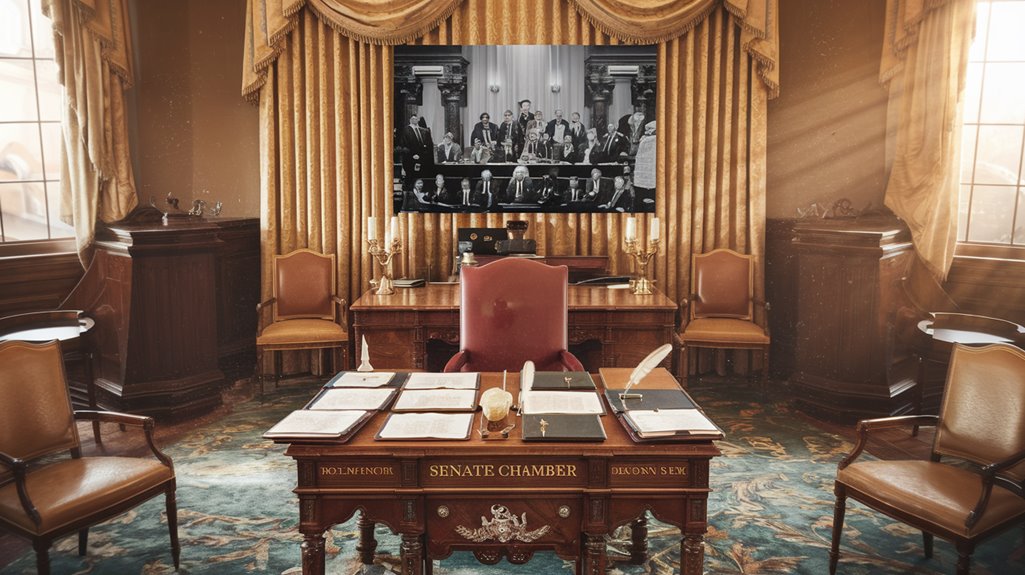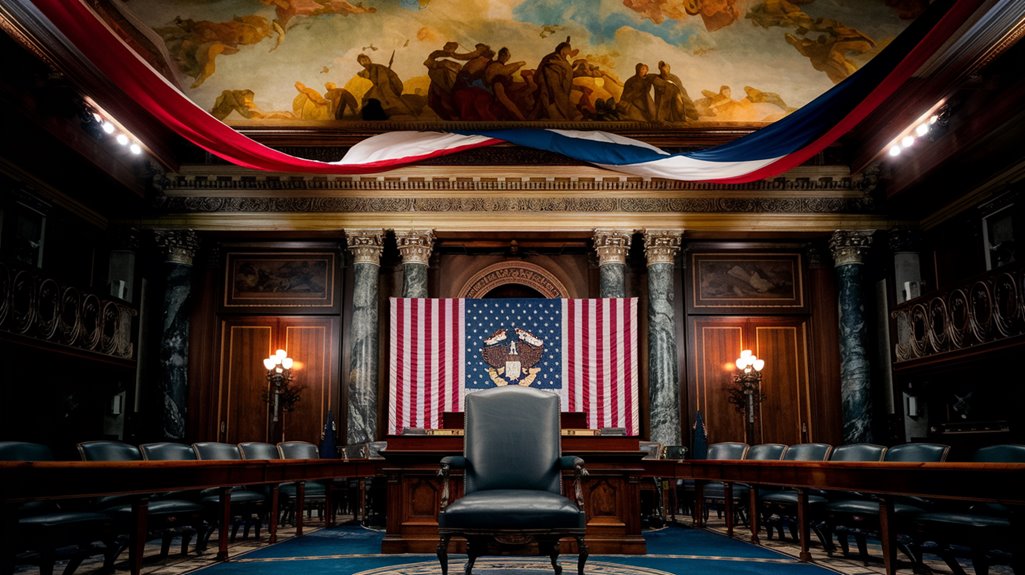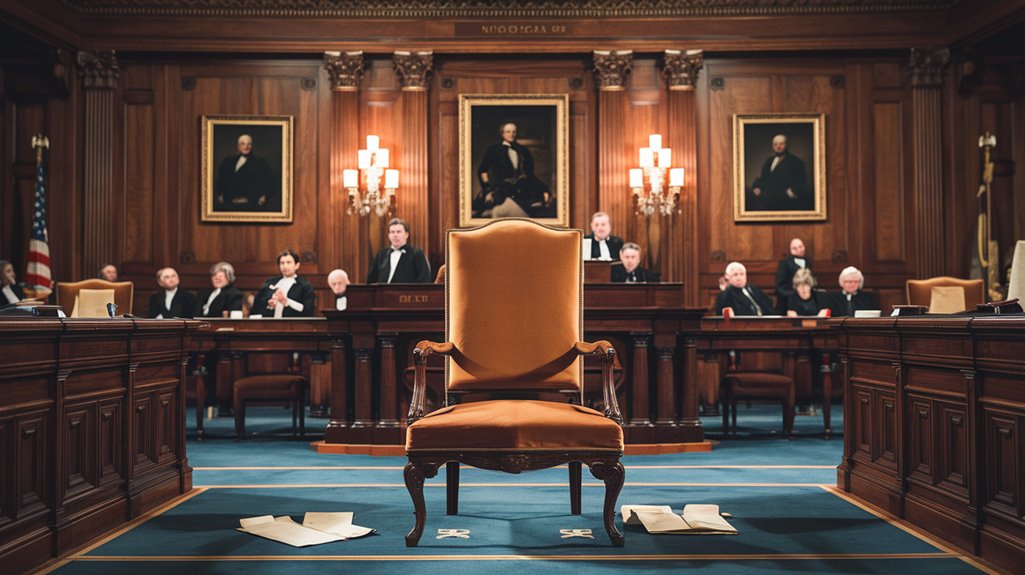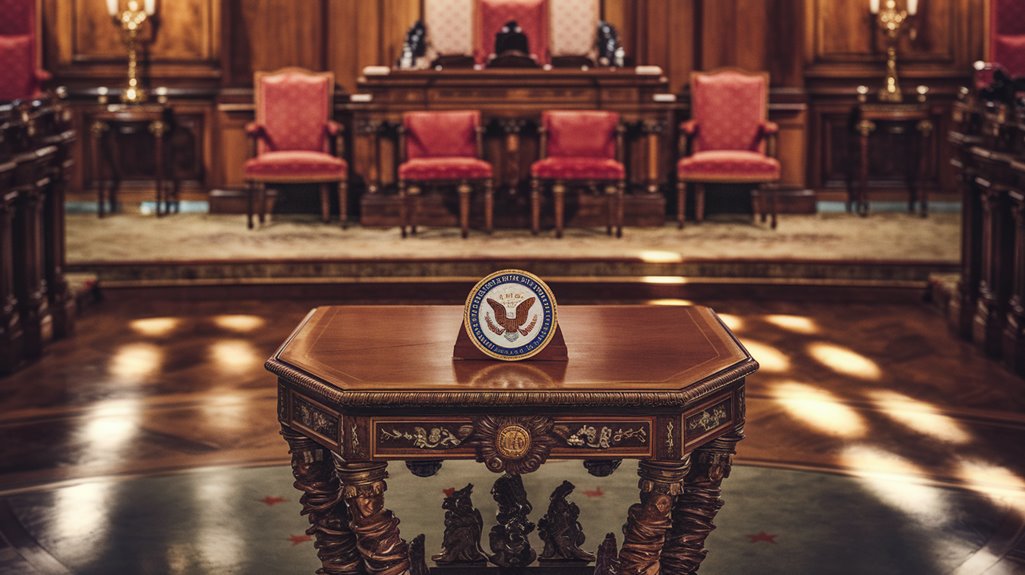The Senate Selected the Vice President Once in U.S. History
You might be surprised to learn that there's only been one instance in American history when the Senate had to step in and choose a Vice President. It happened in 1837, and it wasn't just a simple vote – it was a drama-filled event involving Richard M. Johnson, personal scandals, and intense party politics. While today's electoral process seems more straightforward, this unique moment revealed how our Constitution's backup plans actually work in practice.
The Constitutional Framework Behind Senate Vice Presidential Selection

While most Americans are familiar with the standard Electoral College process for selecting a Vice President, the Constitution provides a backup method through the Senate when no candidate receives a majority of electoral votes.
The constitutional provisions specify that the Senate must choose between the two candidates who received the highest number of electoral votes.
For this special selection process, you'll need two-thirds of all Senators present to form a quorum, and a majority must agree on the choice.
The same vice presidential eligibility requirements apply: candidates must be natural-born citizens, at least 35 years old, and U.S. residents for 14 years.
This process differs significantly from the original system where the first runner-up automatically became vice president.
They also can't be from the same state as the President-elect, and anyone disqualified by impeachment, insurrection, or rebellion is ineligible to serve.
Article I of the Constitution established this backup selection process while also granting the Vice President tie-breaking voting power in the Senate.
The 1836 Electoral College Controversy
The sole instance of Senate intervention in vice presidential selection occurred during the 1836 election, when Martin Van Buren's running mate, Richard M. Johnson, fell one electoral vote short of a majority.
Virginia's 23 electors, concerned about Johnson's personal scandals, cast their votes for William Smith instead.
The election also featured an unsuccessful attempt at electoral manipulation by the Whig Party, which ran multiple regional candidates to prevent Van Buren's victory. Van Buren achieved a decisive win with nearly 60% of electoral votes.
Despite this strategy, Van Buren secured 170 electoral votes.
Party loyalty played an essential role, as both Van Buren and Johnson were handpicked by outgoing President Andrew Jackson to continue his policies. Johnson went on to cast frequent tie-breakers in the Senate during his term.
The Senate ultimately resolved the vice presidential deadlock on February 8, 1837, with Johnson defeating Francis Granger in a 33-16 party-line vote.
Richard M. Johnson's Path to Vice Presidency
Despite his impressive military service and political experience, Richard M. Johnson's path to the vice presidency was fraught with controversy.
You'll find that Johnson's background included serving in both the House of Representatives and Senate, while also leading Kentucky riflemen in the War of 1812. His claimed killing of Tecumseh initially boosted his political standing.
However, political challenges emerged from his personal life, particularly his open relationship with his slave Julia Chinn and their two daughters. He devoted time to education, helping to establish Columbian College and other schools in Kentucky.
This relationship, combined with his chronic financial troubles and unconventional behavior, made him a contentious choice for vice president. During his term as vice president, he spent considerable time away from his duties while running a tavern in Kentucky.
Despite these issues, he ultimately secured the position through a Senate vote – though not before facing significant opposition from electors who refused to support him due to his controversial personal life.
The Historic Senate Vote of February 1837
Johnson's path to the vice presidency ultimately led to a historic moment in American political history.
On February 8, 1837, you would've witnessed the Senate exercising its constitutional power under the 12th Amendment for the first and only time in U.S. history.
The Senate dynamics played out largely along party lines as senators gathered to choose between Johnson and Frances Granger.
With a decisive 33-16 vote, the Democratic-majority Senate selected Johnson as the nation's ninth vice president.
The electoral implications of this vote were significant, as it demonstrated how the constitutional framework could resolve a situation where no vice-presidential candidate secured an electoral majority.
Johnson failed to win the electoral majority after Virginia's electors refused to support his candidacy.
This unprecedented event remains a unique example of the Senate fulfilling its constitutional duty to complete the electoral process.
Legacy and Impact on American Electoral Process

While many aspects of American electoral history have faded into obscurity, the Senate's 1837 vice-presidential selection left an enduring mark on the nation's democratic processes.
As established by the Twelfth Amendment ratification, this historic process of Senate selection became a constitutional safeguard in 1804.
The event's historical significance extends far beyond its time, shaping how you'll see electoral integrity maintained today.











